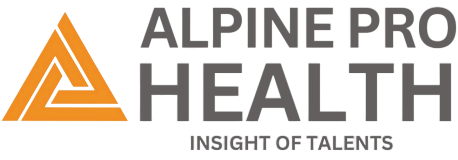Introduction
Risk Adjustment Data Validation (RADV) audits play a crucial role in maintaining the integrity and financial accountability of the Medicare Advantage (MA) program. Conducted by the Centers for Medicare & Medicaid Services (CMS), RADV audits are designed to ensure that the diagnoses reported by Medicare Advantage Organizations (MAOs) accurately reflect the clinical documentation present in patients’ medical records.
As Medicare Advantage plans rely on hierarchical condition category (HCC) coding to determine payments, any inaccuracies or unsupported diagnoses can lead to significant reimbursement adjustments.
What Are RADV Audits?
Medicare audit compliance are retrospective audits performed by CMS to verify the accuracy of Risk Adjustment codes submitted by MAOs for risk-adjusted payments. These audits compare submitted diagnosis codes with the actual medical records to confirm whether the reported conditions are properly documented and clinically supported.
If CMS determines that certain HCCs are not substantiated, they can disallow those codes and recoup overpayments made to MAOs. With the implementation of extrapolation methodologies, a single error can potentially impact thousands of claims, making CMS audit reviews a high-stakes issue.
Why Are RADV Audits Important?
Medicare Advantage plans receive capitated payments based on the health status and demographic factors of enrolled beneficiaries. Risk adjustment ensures that plans caring for sicker patients receive higher reimbursement to account for greater expected costs.
However, this model is susceptible to abuse if MAOs over-report diagnoses or submit codes that lack clinical documentation. Medicare risk data validation act as a safeguard to:
- Prevent fraudulent or upcoded claims
- Promote documentation accuracy
- Ensure federal funds are used appropriately
- Maintain parity among MAOs
By auditing a sample of beneficiaries and applying extrapolation, CMS estimates and recovers excess payments across the broader population, ensuring financial fairness in the MA program.
Types of RADV Audits
- National RADV Audits:
Conducted randomly across MA plans to evaluate overall program accuracy. - Targeted RADV Audits:
Focus on specific plans or HCCs that raise concerns of over-reporting or documentation discrepancies. - Contract-Level RADV Audits:
First, analyze a sample of beneficiaries within a specific MAO contract to determine payment accuracy. Then, extrapolation may be applied to recoup overpayments across the contract population.
Common Triggers for Risk Adjustment Data Validation Audit Errors
Health plans often face financial penalties due to the following documentation and coding errors:
- Missing or incomplete clinical notes
- Diagnosis without treatment or evaluation evidence
- Lack of provider signatures or encounter dates
- Unsupported HCC coding
- Reliance on problem lists without active management documentation
Coders must ensure that all diagnoses meet the CMS criteria of MEAT (Monitored, Evaluated, Assessed, Treated) or TAMPER (Treatment, Assessment, Monitoring, Plan, Evaluation, Referral).
Financial Impact of RADV Audits on MA Plans
RADV Audits can significantly impact Medicare Advantage reimbursements through:
- Payment Recoupments:
When CMS identifies unsupported diagnoses, they recover overpayments by extrapolating errors from the audit sample to the larger population. This can result in multi-million-dollar losses for MAOs. - Operational Costs:
Responding to RADV audits requires investment in chart retrieval, coder reviews, legal counsel, and audit defense resources. - Plan Star Ratings:
Poor audit outcomes can influence CMS star ratings, which affect bonuses, enrollments, and public reputation. - Legal and Compliance Risks:
Persistent RADV findings may trigger additional federal investigations or sanctions under the False Claims Act.
Recent Trends: Increased Scrutiny & Enforcement
Over the last few years, CMS has increased its focus on risk adjustment integrity. Notable developments include:
- Expansion of RADV Extrapolation:
Consequently, CMS finalized rules in 2023 allowing extrapolation of audit findings without requiring a fee-for-service (FFS) adjuster, increasing the financial risk for MAOs. - More Targeted Audits:
CMS is leveraging data analytics to flag high-risk contracts, frequently audited HCCs, and documentation anomalies for focused audits. - Legal Precedents:
DOJ enforcement actions against certain health plans have increased awareness and caution in risk adjustment reporting.
These developments signal a shift toward aggressive compliance enforcement, pushing MA plans to tighten documentation and coding practices.
Strategies to Prepare for and Succeed in RADV Audits
To reduce financial and reputational risks, Medicare Advantage organizations must invest in proactive strategies:
1. Strengthen Clinical Documentation Improvement (CDI)
Ensure that provider documentation not only captures the severity of illness but also meets CMS validation standards. In addition, ongoing provider education and templates can support better documentation habits.
2. Conduct Internal Risk Adjustment Audits
Perform regular chart reviews and retrospective audits that simulate RADV criteria. Identify and address gaps before CMS identifies them.
3. Leverage AI and Predictive Analytics
Use GenAI-driven platforms to flag potential unsupported HCCs, predict audit vulnerabilities, and prioritize high-risk charts for review.
4. Invest in Training and Coding Accuracy
Ensure your coding team is AAPC- or AHIMA-certified, up-to-date on CMS risk adjustment guidelines, and familiar with audit standards.
5. Develop a RADV Response Playbook
Create a structured workflow for responding to audit requests, including chart retrieval, validation reviews, coder sign-offs, and audit defense preparation.
Conclusion
RADV audits are no longer just compliance checkpoints; instead, they are now major financial and operational determinants for Medicare Advantage organizations. Moreover, with CMS ramping up audit scope, extrapolation, and enforcement, MAOs must be audit-ready at all times.
By focusing on documentation accuracy, coder education, audit simulation, and advanced technologies like AI, health plans can not only reduce the risk of RADV recoupments but also reinforce their commitment to data integrity and patient-centered care.

